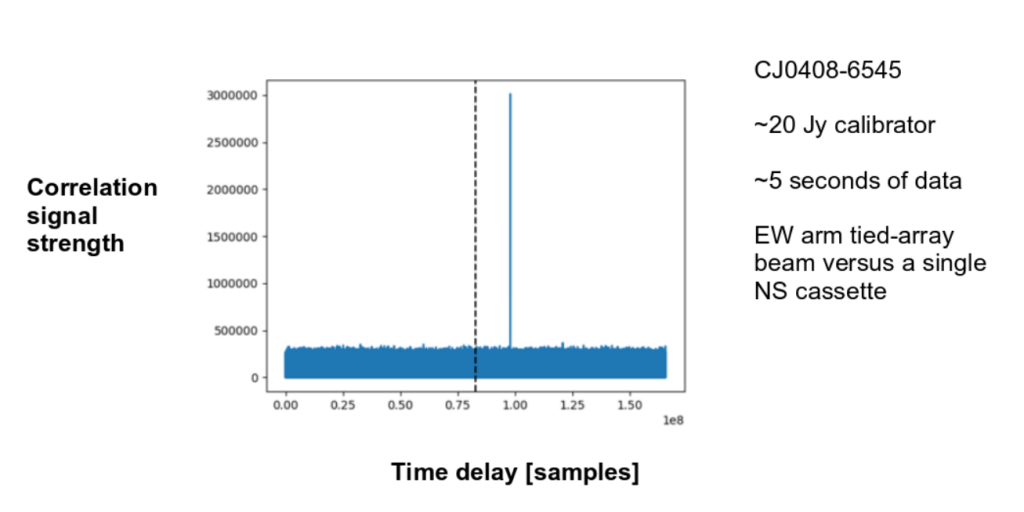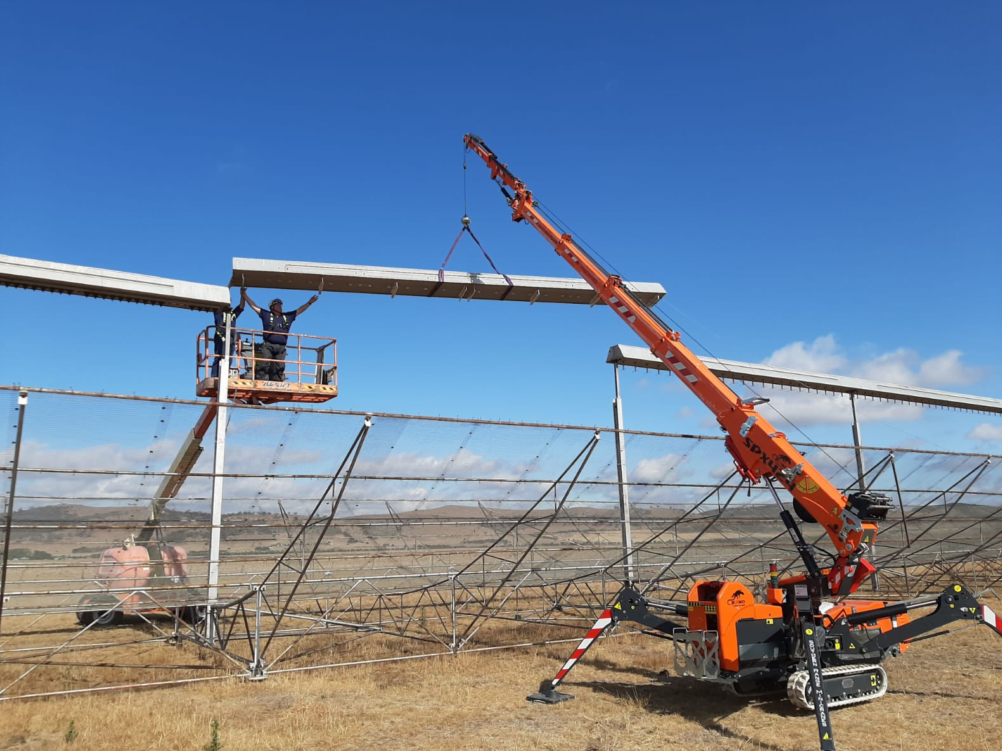June 2020 : both arms of the Molonglo telescope have been brought into simultaneous operation for the first time in decades, as part of the hunt for host galaxies of Fast Radio Bursts.
Molonglo consists of two “arms” — each 1.6 km long and 11 meters wide, and aligned in the North-South and East -West directions, in a flat valley near the town of Bungendore in southern New South Wales.
The East-West arm of the telescope has been in full operation after a major upgrade 5 years ago, in a collaboration between the Swinburne University of Technology and the University of Sydney.
In 2019-2020, the long dormant North-South arm is being brought back into full operation in the UTMOST-2D project.

Observations of a bright quasar — a black hole in the center of a distant galaxy — showed a strong signal on both arms in first tests of the newly mounted North-South arm receivers in June 2020.
The quasar shows up in the signal collected on both arms as a strong peak as the source transited overhead, in observations coordinated by PhD student Vivek Gupta.
The observation shows that the project is well on the way to being able to make images of a few square degree region of the sky (about 10 times the size of the full Moon) — something that has not been done at Molonglo since the SUMSS survey in the 1990s — and eventually to localise FRBs to their host galaxies.
Congrats to the whole UTMOST-2D team for this milestone achievement!
